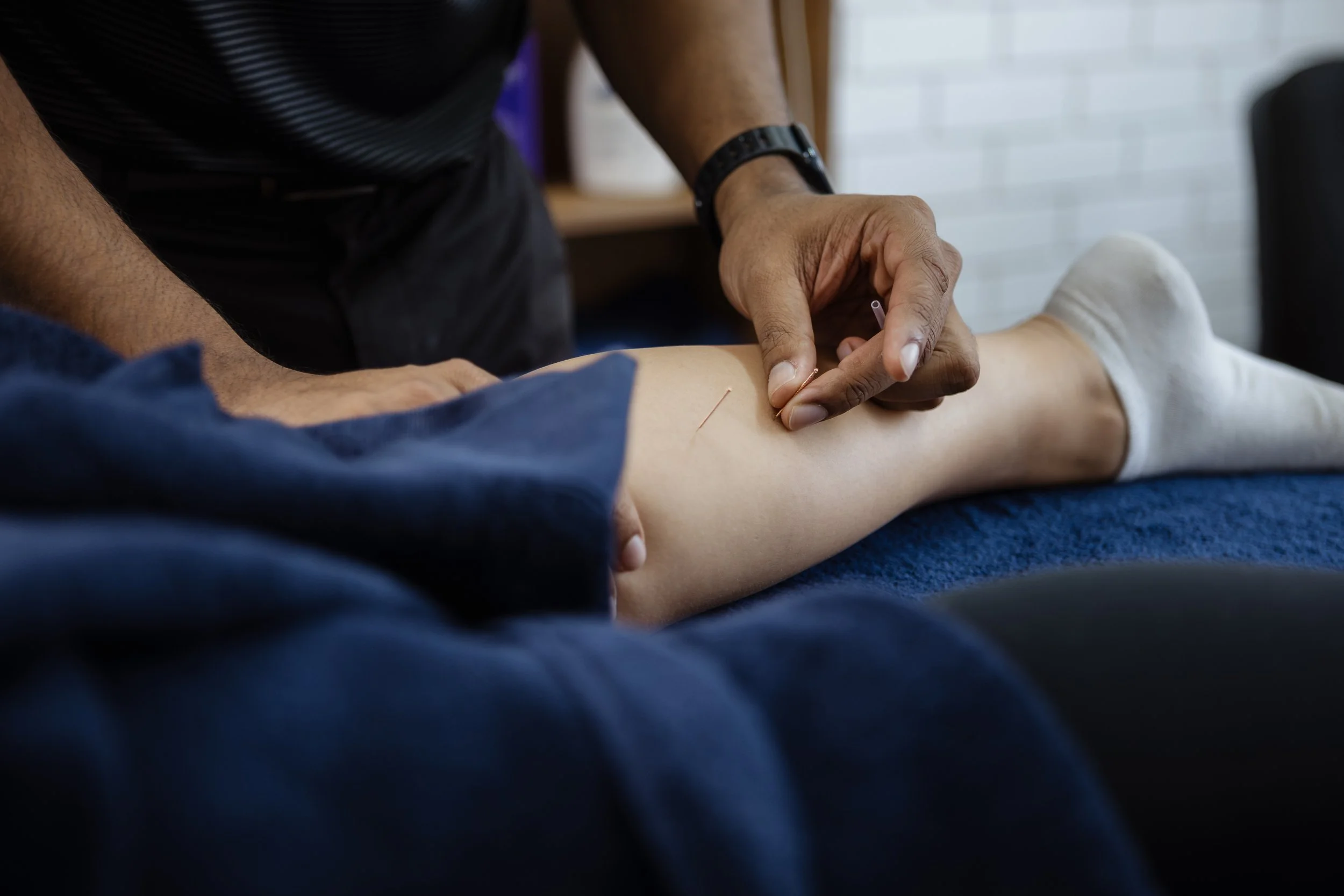Dry Needling
What is it?
Dry Needling is a skilled intervention used by trained healthcare professionals that requires further study and involves a thin needle (without any medication or injection) to penetrate the skin and stimulate underlying myofascial trigger points, muscular, and connective tissues.
"Dry" vs. "Wet": The term "dry" distinguishes it from "wet" needling, which involves injecting a substance like saline or cortisone. Dry needling uses a solid filament needle with no substance injected.
The goal is to deactivate these trigger points, reduce pain, inactivate muscle tension, and restore normal muscle function. It is based on modern Western medicine principles of anatomy and neurophysiology.
What are the benefits?
The proposed benefits include:
1. Reduction of Pain: It can provide significant and sometimes immediate pain relief by:
Breaking the Pain-Spasm Cycle: The needle causes a local twitch response in the muscle, which helps break the cycle of muscle spasm and pain.
Altering Pain Chemistry: The micro-injury from the needle stimulates the body's natural pain-relieving mechanisms, releasing biochemicals that reduce pain and inflammation.
Modulating Pain Signals: It influences how the brain and spinal cord process pain signals (neuromodulation), effectively "resetting" the overactive nerve.
2. Improved Range of Motion: By releasing tight muscle bands and knots, dry needling can reduce muscle tension and stiffness, allowing for greater and easier movement in the associated joint.
3. Enhanced Recovery and Healing: The slight trauma from the needle increases blood flow to the area, bringing oxygen and nutrients that promote tissue healing and reduce local inflammation.
4. Complementary to Other Therapies: It is rarely used alone. Dry needling is most effective when integrated into a broader physical therapy or treatment plan that includes exercise, manual therapy, and corrective strategies. It can quickly reduce pain, allowing a patient to participate more effectively in their rehabilitation exercises.
What are the risks?
When performed by a qualified and trained practitioner, dry needling is generally considered safe. However, like any medical procedure, it carries potential risks and common side effects.
Common, Temporary Side Effects (Usually mild and short-lived):
Soreness: The most common side effect is muscle soreness or aching in the needled area for 24-48 hours after treatment, similar to post-exercise soreness.
Bruising
Bleeding: A small drop of blood may appear at the needle site.
Tiredness or Fatigue: Some people feel temporarily tired after a session as their body responds to the treatment.
Less Common, More Serious Risks:
These are very rare and generally only occur if the practitioner isn’t specifically trained:
Pneumothorax: This is a punctured lung, which is the most serious potential risk.
Nerve Injury: Temporary or, very rarely, permanent nerve injury can occur if a needle directly contacts or irritates a nerve.
Infection: While extremely rare with the use of sterile, single-use needles, any break in the skin carries a risk of infection.
Vasovagal Response: Some individuals may feel dizzy, lightheaded, nauseous, or faint during or immediately after treatment. This is a nervous system response, not an allergic reaction.
Book Online — It’s fast and simple
Skip the phone queues and book online in just a few clicks. You can pick a day, time, and appointment type that suits you.


